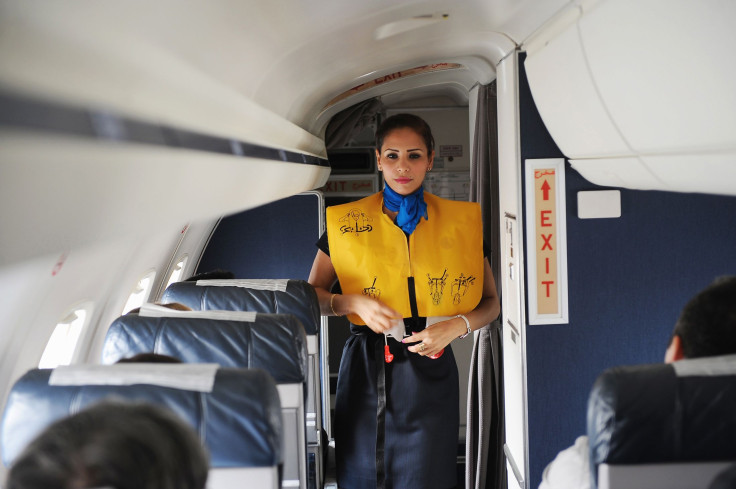How To Survive A Crash Landing And Other Safety Tips For Frequent Flyers From British Airways

What began as a training exercise for oil company employees who routinely travel to remote locations is now a half-day safety course offered at British Airways’ flight training center, and available to frequent fliers willing to shell out $265 for a few life-saving tips.
“In this day and age, everybody is so comfortable with flying, they get on planes and don’t consider safety,” Andy Clubb, a safety instructor, told The Associated Press. Actually, since 8.3 million people disembark from some 93,500 safely landed airplanes each and every day, most people simply assume there are better things to fret over.
The course is designed to “enhance confidence in flying by increasing knowledge and awareness of safety procedures,” according to the company website. After you experience a situation on a full motion Boeing 737 cabin simulator, you will participate in a fake emergency landing followed by a full aircraft evacuation from a smoke-filled environment. Following all that excitement, participants are given a full debrief with advice, information, and safety techniques intended to improve your odds of survival.
As reported by AP, safety tips include:
1/ Count the number of rows to the nearest exit, remembering to look behind you of course, while the flight attendant runs through the safety demonstration. Done with that? Count the number of rows to the second nearest exit.
2/ Practice clasping and taking off your seatbelt; this builds your muscle memory. Next, search around for your life vest and touch it to seal it into your memory.
3/ Time to brace yourself! There are many wrong ways to brace yourself and then there's the right way. This is the right way: Bend forward as far as possible, keeping your head down. Place your feet flat on the floor and slide them back. Your dominant hand goes on the back of your head first, and then you place your other hand over it. Do not interlock your fingers. What you are doing is ensuring the bones in the stronger hand aren’t broken so you can eventually unbuckle your seatbelt.
4/ If an evacuation order is given, move swiftly toward the exit light in red (the color that cuts through smoke the best). When it's your turn, jump down the emergency slide. It’s best to perform quickly and without hesitation, because if you don’t, the flight attendants will give you the push.
5/ Never inflate your life vest while still inside the plane. They limit your mobility in a tight space, or if water fills the cabin, you will be pressed against the ceiling, unable to swim underwater to the door.
Had enough? But you haven't yet. The course also provides a full discussion of ditching (aircraft landing on water), including a demonstration of life jackets, and another discussion of decompression (loss of cabin pressurization), including the use of oxygen masks, with a break for tea somewhere in the middle. Just in case you don’t feel fully prepared, the instructor throws in a few hotel safety tips as a bonus. Even on land, we suppose the thinking goes, you can never be too prepared.



























